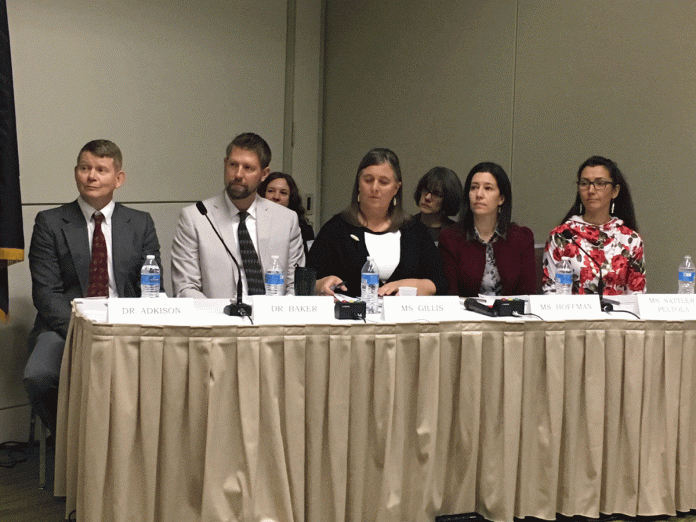
Rapid environmental changes already impacting salmon populations require substantially more research into the degree of these changes, fisheries experts are telling a congressional committee looking at the state of salmon in Alaska.
Among them is Katrina Hoffman, president and chief executive officer of the Prince William Sound Science Center, who addressed a field hearing of the U.S. Senate Committee on Commerce, Science and Transportation in Anchorage.
“We know that Prince William Sound is changing,” Hoffman said in written testimony before the field hearing, chaired by Sen. Dan Sullivan, R-Alaska. “The North Pacific in general is warming at about a fifth of a degree per decade,” she said. “We see that signal in the waters flowing into the Sound from the Gulf of Alaska.
“Our research suggests that fish exposed to anomalously warm coastal waters in their first year in the ocean made them more likely to suffer effects from competitive interactions with pink salmon,” Hoffman said. “We also documented slower growth rate of several key populations of sockeye salmon in the Gulf of Alaska during years influenced by the Blob. We feel more studies are highly relevant for filling knowledge gaps that are currently of interest to a variety of salmon stakeholders in the state of Alaska.”
A similar call for more research funds came from others at the field hearing, including Milo Adkison, of the University of Alaska Fairbanks College of Fisheries and Ocean Sciences; Matthew Baker, science director for the North Pacific Research Board; Karen Gillis, executive director of the Bering Sea Fishermen’s Association; and Mary Sattler Peltola, executive director of the Kuskokwim River Inter-Tribal Fish Commission.
Also addressing the field hearing were Chris Oliver, assistant administrator for NOAA Fisheries, and Alaska Commissioner of Fish and Game Sam Cotten.
The hearing went on for several hours at the Dena’ina Convention Center in Anchorage, where the final day of the 2018 convention of the Alaska Federation of Natives was under way.
Hoffman told Sullivan that research needs include a focus on ecosystem shifts, especially those associated around the loss of glacial ice and related to salmon are necessary for the PWS region.
“We need to take in situ measurements at different depths – not just remote-sensing,” Hoffman said. “This will allow us to understand interactions between wild and hatchery salmon in Prince William sound and the Gulf of Alaska and on the spawning grounds.”
NOAA has substantial resources, and groups like the PWSSC could collaborate, focusing on linkages between Prince William Sound and the Gulf of Alaska, Hoffman said. Researchers must also look at migratory and reproductive performance of salmon in changing river conditions, including glacially-influenced rivers like the Copper or smaller coastal streams like many in PWS, while engaging salmon managers, to maintain the region’s resilience and Alaska’s ability to serve as a global leader in salmon management, she said.














